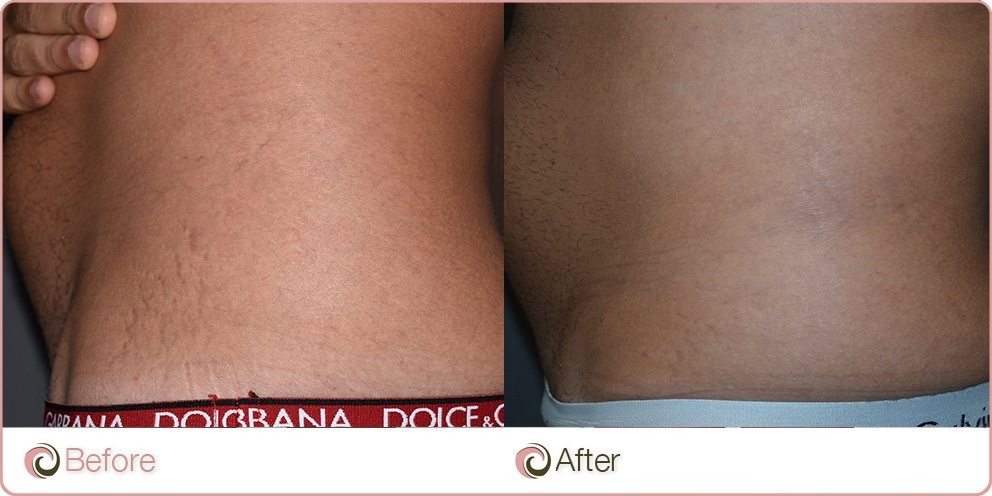Many people experience cellulite, a common skin condition. It can appear on various body parts, irrespective of one’s overall fitness or age, making it a shared experience among many. It affects women whether they are plump or skinny, young or old, and regardless of race, in fact, studies estimate the prevalence of cellulite among post-pubescent women to be as high as 80 to 95 percent.
Several treatments are available for managing cellulite, one of which includes Platelet Rich Plasma (PRP), a newer method in this field.
What Causes of Cellulite?
To understand how PRP works on cellulite, understanding the pathophysiology of cellulite is helpful. While being overweight certainly exacerbates the appearance of cellulite, cellulite is ultimately a condition of the skin. That is why simply removing fat through Liposuction or Coolsculpting will not free you of cellulite, although you might see some improvement.
Two things cause the majority of cellulite. One is the expansion of fat cells causing them to push into the connective tissue below the surface of the skin, creating a lumpy appearance.
The other mechanism causing the deep dimples or “orange peel” look involves stiffening and tightening of the fibrous collagen bands in the skin, which pull the skin’s surface down and create the dreaded indentations.
Other factors, such as whether the skin is loose or tight, affect the appearance of cellulite and the type of treatment likely to yield the best results. When lax skin is involved, cellulite may assume the appearance of bands or stripes.
Stimulating collagen and repairing the skin’s structural issues are what leads to improvements in appearance.
Cellulite can affect both men and women. However, it is more common in women, because they tend to have more subcutaneous fat and weaker (or less flexible) connective tissue structure in the dermis in cellulite-prone areas.
Related:
Cellulite is complicated and still not well understood, several factors appear to be connected to the chance of having cellulite.
· Genetics
· Weight & weight fluctuations
· Poor circulation
· Hormones
· Sun damage
· Smoking
· Poor nutrition
· Gender
· Exercise and Diet
How Platelet Rich Plasma Treatment Works
PRP is designed to potentially aid in collagen growth and tissue regeneration, which might contribute to strengthening the dermis layer of the skin.
Since the 1970s, PRP has been used for a variety of conditions and procedures, such as heart surgery, soft tissue repair during plastic surgery procedures, and in orthopaedics to treat knee arthritis.
PRP has become more well known in recent years due to media coverage of this non-surgical treatment for sports injuries among athletes including Tiger Woods and American baseball player Alex Rodriguez. Kim Kardashian’s infamous “vampire facial” drove interest in the use of PRP for stimulating collagen to keep skin looking young and supple. Improving the appearance of cellulite has recently been added to the PRP repertoire.
What’s Involved in A PRP Treatment?
The treatments begin just like regular annual lab work: with a blood draw by a doctor, nurse, or phlebotomist. In fact, less blood may be drawn for the PRP procedure than for routine lab work. The extracted blood is placed in special centrifuge equipment, which “spins” the blood for several minutes until the components separate, leaving a platelet-rich layer.
Once the platelet-rich layer is isolated, the patient returns to the treatment room, where it is injected back into the site of injury, or in the case of cellulite, the site of the damaged skin and stiff collagen strands which cause the dimpled appearance. The concentrated platelets trigger the body’s natural healing response by stimulating growth factors and cytokines.
Treatments typically take less than an hour, and most patients find that any discomfort is comparable to a flu shot. PRP can also be used to treat stretch marks and improve skin texture in general, see the before and after picture below.

PRP can be used as a single treatment for cellulite, or in conjunction with other treatments, such as skin needling. Cosmos Aesthetics doctor and injectables expert Dr Joseph Ajaka explains, “We have also started using collagen stimulation injections into the area of cellulite of concern”.
https://www.instagram.com/p/Bf0IQL7BWJE/?hl=en&taken-by=diaryofacosmeticnurse
PRP does not melt fat cells. However, it does create the healthier skin structure necessary to minimise the appearance of cellulite over the long term. PRP also consists of substances created by the body, which makes it a good complement to a more natural, less invasive approach to treating cellulite. Learn more about how we treat cellulite at Cosmos Aesthetics here and check out the video below to learn about another cellulite treatment that’s more invasive than PRP.






